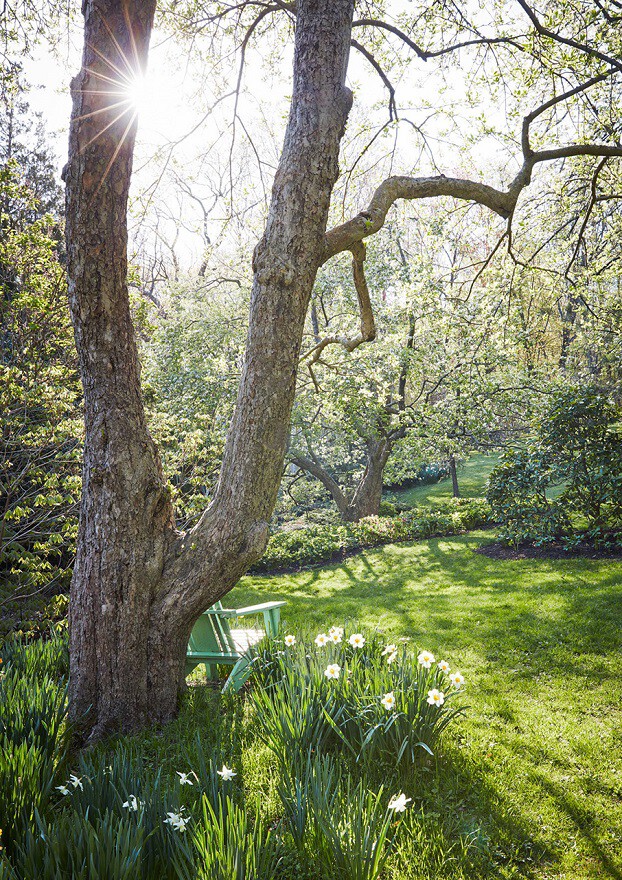There's no need to turn to harmful synthetics.

Everyone wants a majestic, manicured lawn—but getting your acreage there takes work, especially if you want to go the organic route. Which, all things considered, you should, since synthetic fertilizers, herbicides, and pesticides (all petroleum byproducts) make turf temporarily lush and green, but are harmful to people and pets; they can also leach into runoff and pollute waterways, says Paul Tukey, chief sustainability officer at Glenstone Museum, in Potomac, Maryland. For a chemical-free approach, think long-term (as opposed to quick-fix), and nourish the soil beneath the sod.
"To figure out what your lawn is hungry for, conduct a home soil test, or look at weeds as signs from Mother Nature," Tukey says. For instance, common clover signals a lack of nitrogen, which you can provide via a natural supplement—he likes Purely Organic Lawn Food ($22.78, homedepot.com). Then adopt this routine.
Water deeply, but only weekly—and saturate the soil at least 10 inches down. This creates stronger roots, because they'll "learn" to dig for a drink. Then, mow gently. Raise your mower to its highest height (between three-and-a-half and four inches). Tall grass makes a shady canopy that prevents soil from drying out and keeps many weeds from germinating.
Last but not least, seed it. Every fall and spring, cover your lawn with grass seed suitable for your region (four to five pounds per 1,000 square feet) to fill any thinning patches. And don't forget: Compost is chock-full of soil-enriching nutrients, including nitrogen, phosphorus, and potassium. Blanket your lawn in the stuff each spring, about a quarter-inch deep, to boost growth.